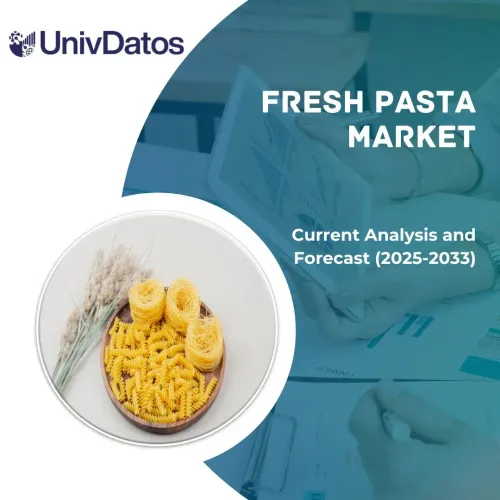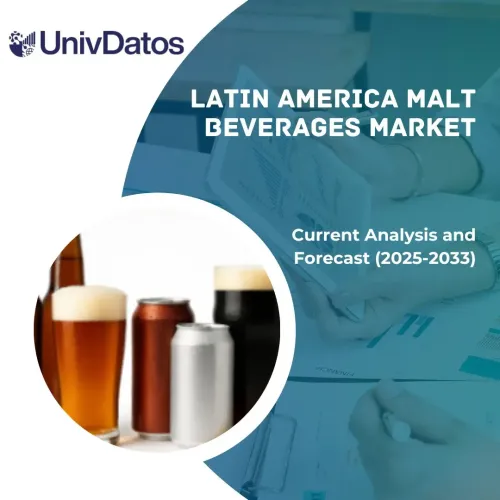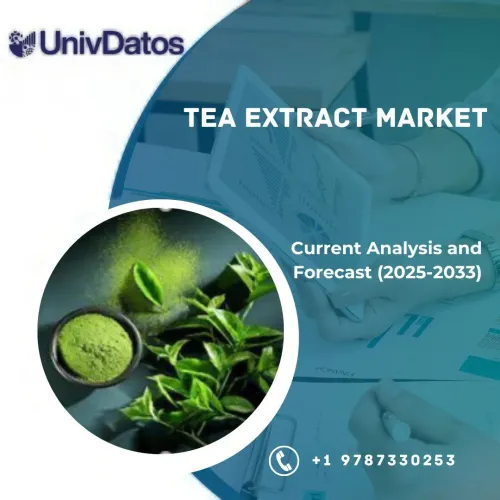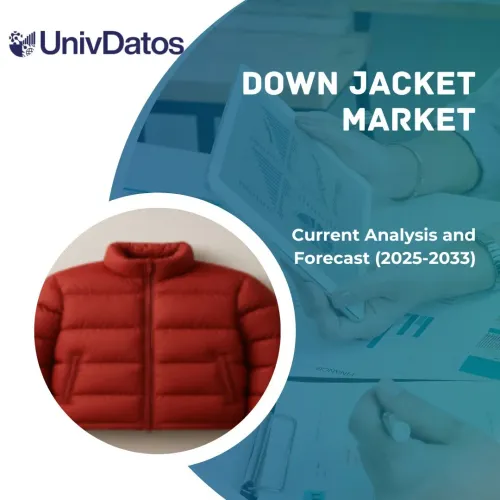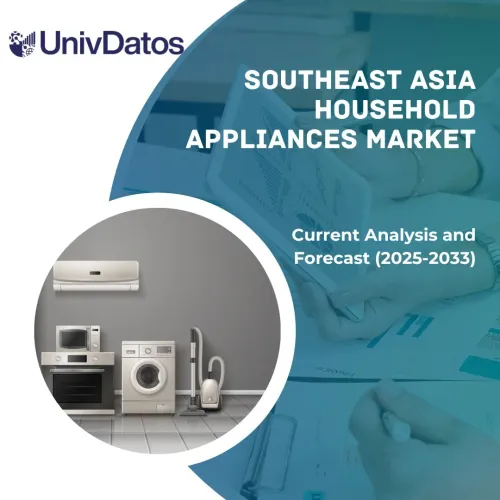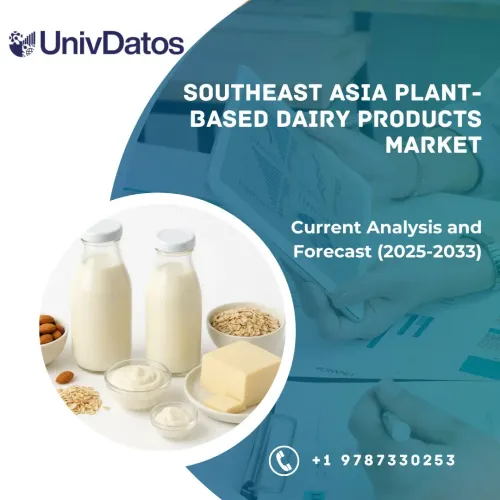- Home
- About Us
- Industry
- Services
- Reading
- Contact Us
Viscose Staple Fiber Market: Current Analysis and Forecast (2025-2033)
Emphasis on Raw Material (Wood Pulp, Cotton Pulp, Cellulose Xanthate, Others); Application (Woven, Non-Woven& Specialty); End-User (Apparel & Clothing, Healthcare, Automotive, Others); Region/Country
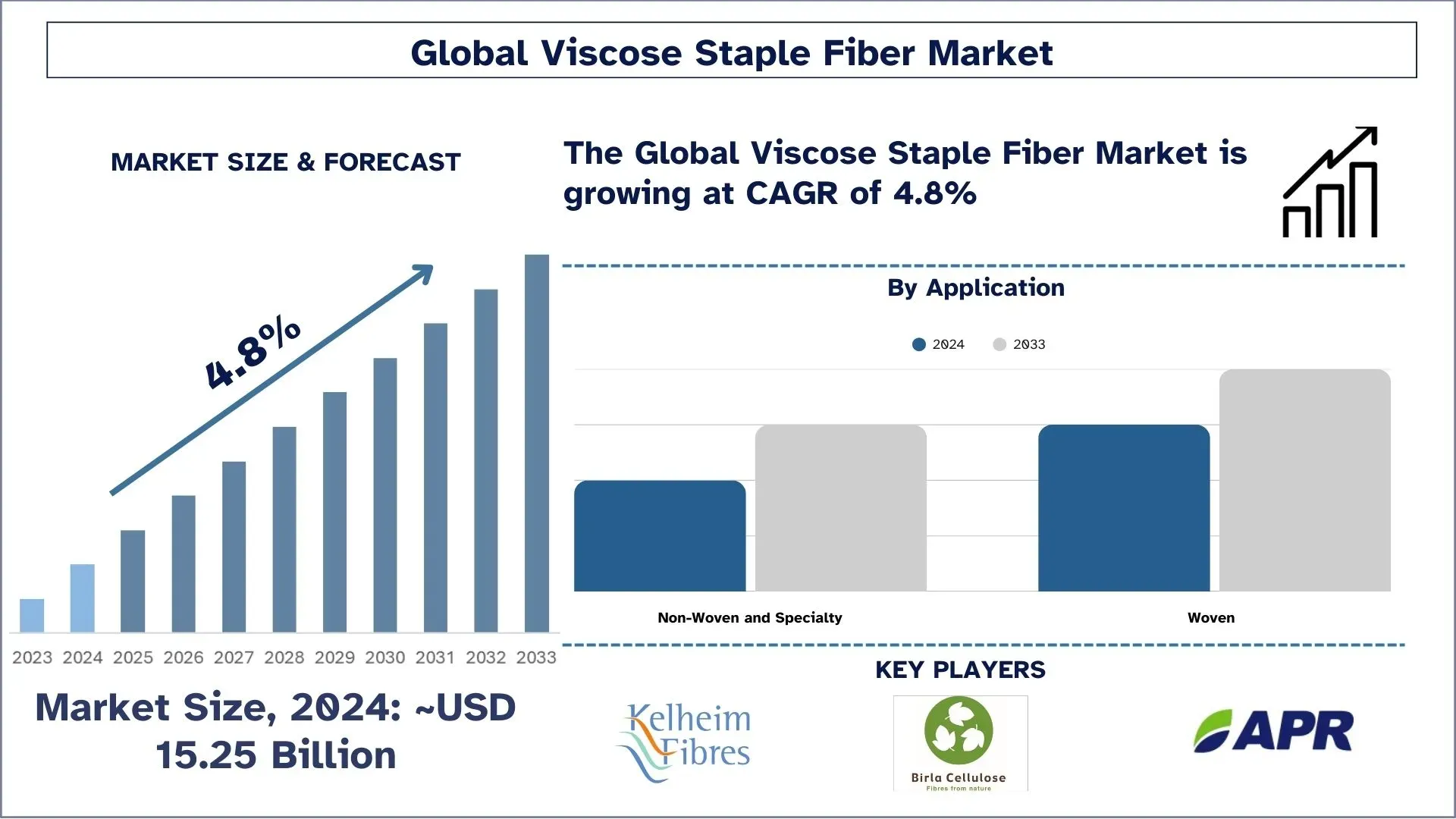
Viscose Staple Fiber Market Size & Forecast
The Viscose Staple Fiber Market was valued at approximately USD 15.25 billion in 2024 and is expected to grow at a substantial CAGR of around 4.8% during the forecast period (2025-2033), owing to the rising demand from the textile and apparel industry.
Viscose Staple Fiber Market Analysis
The global Viscose Staple Fibers (VSF) market continues to develop steadily because textile producers and apparel manufacturers, and home furnishing companies expand their market requirements. The VSF industry is increasing in popularity because consumers choose it over cotton due to its softness, combined with breathability and its biodegradable properties. The market maintains its competitive position by integrating modern production methods with expanding resources in sustainable manufacturing. The VSF market stands ready to fulfill environmental consumer demands through expanding textile markets worldwide, particularly in emerging economies. The market’s future growth patterns will be influenced by this current development pattern and the continuous transition toward environmentally sustainable fiber manufacturing.
Viscose Staple Fiber Market Trends
This section discusses the key market trends influencing the various segments of the Viscose Staple Fiber market as identified by our research experts.
Shift toward sustainability and eco-conscious production practices.
The Viscose Staple Fibers (VSF) market accelerates its growth because of growing consumer interest in environmentally responsible manufacturing approaches. Executives in the textile industry invest significant funds into closed-loop systems for manufacturing because these systems decrease waste output and cut chemicals. Stiffer environmental standards worldwide, alongside textile industry demands for natural moldable fibers, cause VSF manufacturers to implement environmentally friendly production technology, which includes solvent retrieval systems and responsible material sourcing. The market transformation occurs through increased sustainability standards, which lead manufacturers to choose VSF more often because it matches environmental requirements.
Viscose Staple Fiber Market Industry Segmentation
This section provides an analysis of the key trends in each segment of the global Viscose Staple Fiber market report, along with forecasts at the global, regional, and country levels for 2025-2033.
The Wood Pulp Segment is Expected to Witness a Higher CAGR than the Viscose Staple Fiber Market.
Based on raw material, the viscose staple fiber market is segmented into wood pulp, cotton pulp, cellulose xanthate, and others. The wood pulp segment acquired a majority share in the viscose staple fiber market because the market relies directly on both its availability and quality. The market demand for sustainably sourced wood pulp continues to increase because of rising environmental concerns. The sustainable approach in the VSF industry now promotes accountable pulp sourcing while boosting demand for premium pulp production because emerging markets are building their VSF capacity.
The Apparel & Clothing Market Holds the Largest Share of the Market.
Based on end-user, the viscose staple fiber market is divided into apparel & clothing, healthcare, automotive, and others. The apparel & clothing market acquired a majority share in the viscose staple fiber market, and this sector stands as the largest consumer of viscose staple fibers, which has resulted in major market expansion. VSF remains the top choice for fashion applications because of its lightweight and affordable properties, specifically in this period when fashion brands focus on using eco-friendly materials. VSF functions as a crucial sustainable textile material because it is both biodegradable and renewable as sustainable clothing demand grows in consumer markets.
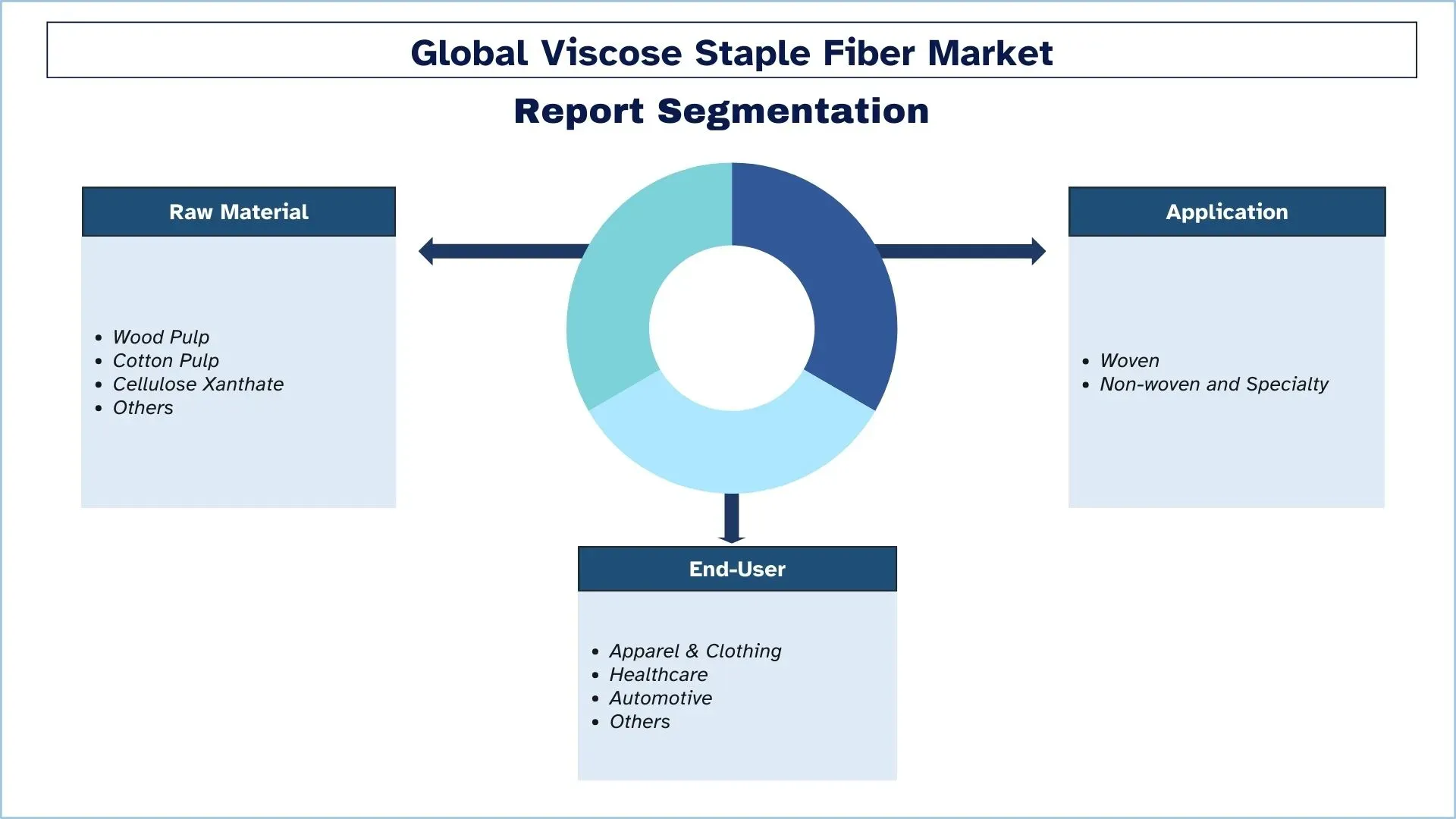
APAC has a significant share of the market in 2024.
The APAC Viscose Staple Fibers (VSF) market demonstrates the largest scale and fastest expansion because textile and clothing industries in China, India, and Bangladesh demand substantial amounts of this material. The market gains momentum because of two core drivers: the region controls textile manufacturing, and there exists a rising demand for sustainable fiber from consumers. Eco-conscious consumers are pushing VSF adoption since they choose sustainable natural fiber products that biodegrade easily. The APAC VSF market will maintain its upward trajectory because demand and production developments support the expanding applications across the fashion and home textiles, and medical fabrics industries.
China Dominates the APAC Viscose Staple Fiber Market
China holds the primary position within the VSF market sector as it produces substantial quantities of Viscose Staple Fiber both domestically and exports it to international markets. Through its prosperous manufacturing capabilities alongside substantial funding for textile operations China keeps a firm grip on worldwide VSF product supply. The rising market requirements inside domestic and international settings for VSF have pushed producers towards developing improved production innovation. Sustainable transformations in the VSF industry are emerging in China because of growing environmental concerns alongside regulatory standards and rising consumer expectations about green products. The industry transformation delivers promising market potential to producers yet requires them to achieve growth without compromising environmental sustainability.
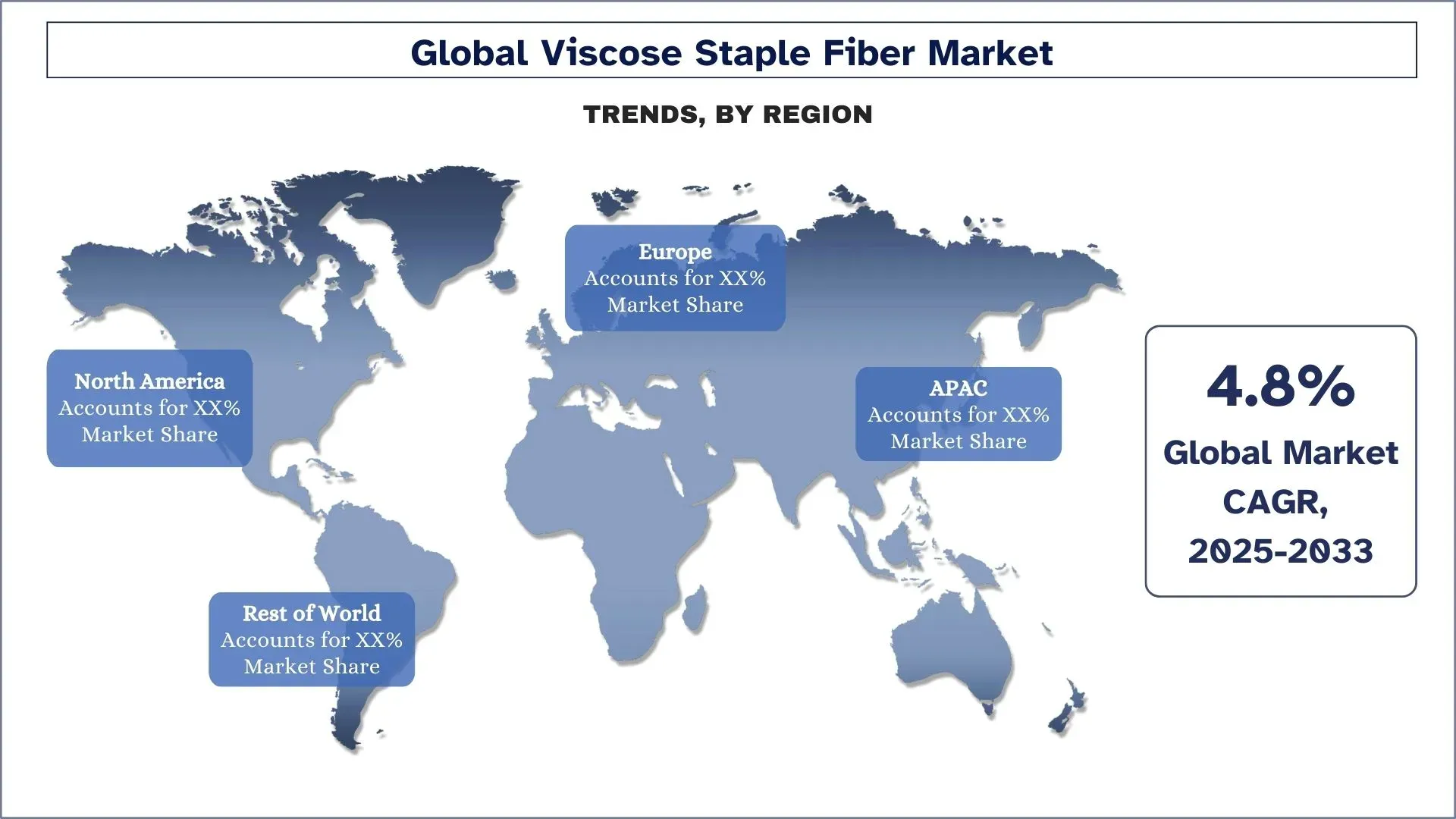
Viscose Staple Fiber Market Industry Competitive Landscape
The viscose staple fiber market is competitive, with several global and international players. The key players are adopting different growth strategies to enhance their market presence, such as partnerships, agreements, collaborations, new product launches, geographical expansions, and mergers and acquisitions.
Top Viscose Staple Fiber Market Companies
Some of the major players operating in the market are Asia Pacific Rayon Limited, Birla Cellulose, Glanzstoff, Jilin Chemical Fiber Group Co. Ltd, Kelheim Fibres GmbH, LENZING AG, Nanjing Chemical Fibre Co. Ltd, Sateri, SNIACE Group, Xinjiang Zhongtoi Chemical Co. Ltd, etc.
Recent Developments in the Viscose Staple Fiber Market
- May 2023 - Kelheim Fibres GmbH and Santoni Spa joined forces to develop a sustainable and advanced menstrual underwear from superior-quality performance viscose fiber and advanced machine technology. The product comprises a softer outer layer and an inlay part made from superior wood-based fibers.
- November 2022 - The LENZING Group completed a milestone of 300,000 tons of LENZING ECOVERO-branded fibers production, with the target to double the production capacity by 2023 due to rising demand.
Viscose Staple Fiber Market Report Coverage
Details | |
Base year | 2024 |
Forecast period | 2025-2033 |
Growth momentum | Accelerate at a CAGR of 4.8% |
Market size 2024 | USD 15.25 Billion |
Regional analysis | APAC, Europe, Asia-Pacific, Rest of the World |
Major contributing region | Asia Pacific is expected to grow at the highest CAGR during the forecasted period. |
Key countries covered | U.S., Canada, Germany, France, UK, Spain, Italy, China, Japan, and India |
Asia Pacific Rayon Limited, Birla Cellulose, Glanzstoff, Jilin Chemical Fiber Group Co. Ltd, Kelheim Fibres GmbH, LENZING AG, Nanjing Chemical Fibre Co. Ltd, Sateri, SNIACE Group, Xinjiang Zhongtoi Chemical Co. Ltd, etc. | |
Report Scope | Market Trends, Drivers, and Restraints; Revenue Estimation and Forecast; Segmentation Analysis; Demand and Supply Side Analysis; Competitive Landscape; Company Profiling |
Segments Covered | By Raw Material, By Application, By End-User, By Region/Country |
Reasons to Buy the Viscose Staple Fiber Market Report:
- The study includes market sizing and forecasting analysis validated by authenticated key industry experts.
- The report presents a quick review of overall industry performance at a glance.
- The report covers an in-depth analysis of prominent industry peers with a primary focus on key business financials, product portfolios, expansion strategies, and recent developments.
- Detailed examination of drivers, restraints, key trends, and opportunities prevailing in the industry.
- The study comprehensively covers the market across different segments.
- Deep dive regional-level analysis of the industry.
Customization Options:
The global Viscose Staple Fiber market can be customized further as per the requirements or any other market segment. Besides this, UnivDatos understands that you may have your own business needs; hence, feel free to contact us to get a report that completely suits your requirements.
Table of Content
Research Methodology for Viscose Staple Fiber Market Analysis (2023-2033)
We analyzed the historical market, estimated the current market, and forecasted the future market of the global Viscose Staple Fiber Market to assess its application in major regions worldwide. We conducted exhaustive secondary research to gather historical market data and estimate the current market size. To validate these insights, we carefully reviewed numerous findings and assumptions. Additionally, we conducted in-depth primary interviews with industry experts across the Viscose Staple Fiber Market value chain. After validating market figures through these interviews, we used top-down and bottom-up approaches to forecast the overall market size. We then employed market breakdown and data triangulation methods to estimate and analyze the market size of industry segments and sub-segments.
Market Engineering
We employed data triangulation techniques to finalize the overall market estimation and derive precise statistical numbers for each segment and sub-segment of the global Viscose Staple Fiber Market. We split the data into several segments and sub-segments by analyzing various parameters and trends, including raw material, Application, end-user, and regions within the global Viscose Staple Fiber Market.
The main objective of the Global Viscose Staple Fiber Market Study
The study identifies current and future trends in the global Viscose Staple Fiber Market, providing strategic insights for investors. It highlights regional market attractiveness, enabling industry participants to tap into untapped markets and gain a first-mover advantage. Other quantitative goals of the studies include:
- Market Size Analysis: Assess the current and forecast market size of the global Viscose Staple Fiber Market and its segments in terms of value (USD).
- Viscose Staple Fiber Market Segmentation: The study segments the market by raw material, Application, end-user, and region.
- Regulatory Framework & Value Chain Analysis: Examine the regulatory framework, value chain, customer behavior, and competitive landscape of the Viscose Staple Fiber Market industry.
- Regional Analysis: Conduct a detailed regional analysis for key areas such as Asia Pacific, Europe, North America, and the Rest of the World.
- Company Profiles & Growth Strategies: Company profiles of the Viscose Staple Fiber Market and the growth strategies adopted by the market leaders to sustain the fast-growing market.
Frequently Asked Questions FAQs
Q1: What is the Viscose Staple Fiber market's current size and growth potential?
As of 2024, the global viscose staple fiber market is valued at approximately USD 15.25 billion and is projected to grow at a CAGR of 4.8% through 2033.
Q2: What are the driving factors for the growth of the Viscose Staple Fiber market?
The growing demand for soft, breathable, and cost-effective fabrics in the global fashion and home textiles sectors continues to be a major driver for the VSF market. As consumers shift towards semi-natural fiber alternatives to cotton, VSF offers an attractive solution due to its versatility and lower cost.
Q3: Which market has the largest share of the Viscose Staple Fiber market by raw material?
The wood pulp segment dominates the global Viscose Staple Fiber market by raw material segment.
Q4: What are the major trends in the Viscose Staple Fiber market?
There is an increasing trend toward environmentally responsible manufacturing, with producers investing in closed-loop processes, biodegradable fibers, and certified sustainable sourcing. Brands and manufacturers are aligning with global sustainability goals, influencing procurement and innovation strategies across the value chain.
Q5: Which region will dominate the Viscose Staple Fiber market?
The APAC region currently dominates the global Viscose Staple Fiber market.
Q6: What are the biggest challenges in the Viscose Staple Fiber market?
The VSF industry faces growing scrutiny over water pollution, deforestation, and chemical waste associated with traditional production methods. Stricter environmental regulations, particularly in major producing countries like China and India, are pressuring companies to invest in cleaner technologies and transparent supply chains, increasing operational complexity and costs.
Q7: Who are the Top players in the global Viscose Staple Fiber market?
The leading companies driving innovation in the Viscose Staple Fiber market include:
• Asia Pacific Rayon Limited
• Birla Cellulose
• Glanzstoff
• Jilin Chemical Fiber Group Co. Ltd
• Kelheim Fibres GmbH
• LENZING AG
• Nanjing Chemical Fibre Co. Ltd
• Sateri
• SNIACE Group
• Xinjiang Zhongtoi Chemical Co. Ltd
Q8: What are the key factors businesses should consider when investing in the Viscose Staple Fibers market?
When investing in the Viscose Staple Fibers market, businesses should evaluate several critical factors, including raw material availability (particularly wood pulp), environmental regulations, production costs, regional demand trends, and sustainability credentials. It’s also essential to assess competitive dynamics, technological advancements in fiber processing, and potential supply chain risks. Due diligence in these areas can help mitigate investment risks and uncover strategic growth opportunities.
Q9: What are the emerging regional markets for Viscose Staple Fibers, and why should businesses pay attention to them?
Emerging markets in Asia-Pacific (especially India, Vietnam, and Indonesia), Latin America, and parts of Eastern Europe are gaining traction due to rising textile demand, lower manufacturing costs, and supportive government policies. These regions present high-growth potential for VSF manufacturers and investors, particularly as global brands seek diversified sourcing and production bases outside of China. Keeping an eye on these markets can help businesses stay ahead of the competition and capitalize on early investment opportunities.
Related Reports
Customers who bought this item also bought

